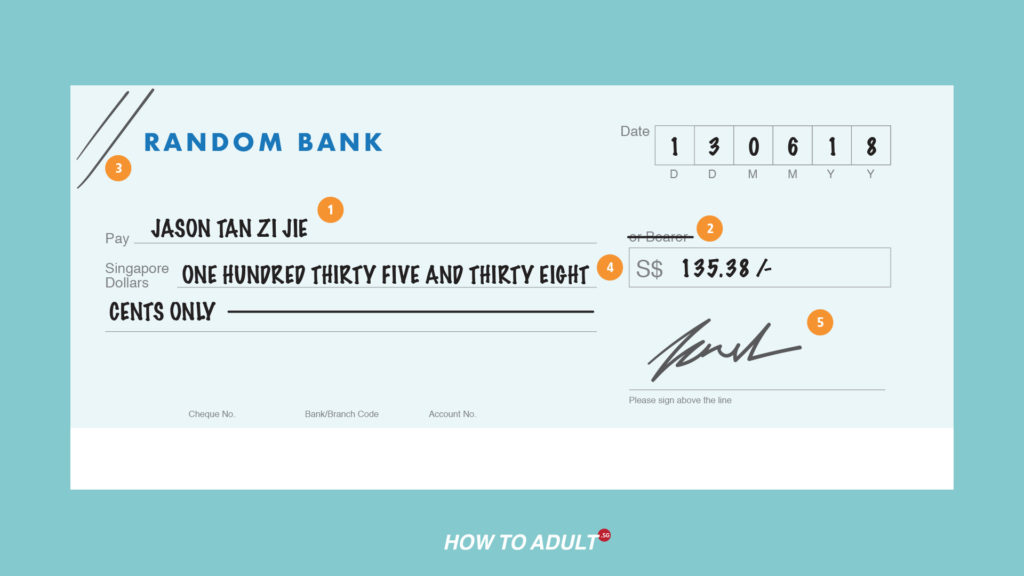It’s finally time to use the cheque book that came along when you opened a current account. Or maybe, it’s the company’s corporate cheque instead. Either way, you’ve seen others fill it up before. But now with the blank cheque in your hands, it feels more GP essay than fill-in-the-blanks. Here’s what you need to know:
Issued Cheque

Step 1: Write the Full Name of your recipient (as per his/her name on bank records) on the Pay line. Write legibly in block letters with a non-erasable ink pen (blue or black).
Step 2: If it is meant for an intended party, cross out “Bearer” with a horizontal line and fill in the payee’s name as per bank records.
Step 3: Cross your check by adding two lines on the top left corner of the cheque. This symbol means that the cheque can only be deposited directly into the payee’s bank account and it can’t be immediately encashed over the counter.
Step 4: Fill in your amount in both words and numbers and make sure they tally. Avoid leaving unnecessary gaps to prevent unauthorised alterations. This is why it is common practice to add a horizontal line behind the words or a /- symbol after the numerical amount.
Step 5: Sign your cheque above the line according to your bank’s signature record.
If you need to make changes, simply cancel with a horizontal line and sign your full signature beside it.
Cash Cheque
A cash cheque is treated just like cash, it belongs to whoever has it. Exchange the cheque for cash over the counter of the issuing bank.
Here’s what to do if you want to issue a cash cheque.
Step 1: Write Cash on the Pay line
Step 2: Do not cross the cheque or cross out the Bearer word
Do’s & Don’ts
- Don’t post-date your cheque.
- Do ensure your bank account has sufficient funds. Otherwise, your cheque will be returned or ‘bounced’. You will then be charged a handling fee for cheque return and an Overdraft (OD) interest charge, which is the last thing you’d want when you are trying to make a payment.


